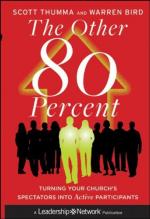I could heartily wish that more of our Country Clergy would follow this Example; and instead of wasting their Spirits in laborious Compositions of their own, would endeavour after a handsome Elocution, and all those other Talents that are proper to enforce what has been penned by greater Masters. This would not only be more easy to themselves, but more edifying to the People.
L.
[Footnote 1: Thomas Tyers in his ‘Historical Essay on Mr. Addison’ (1783) first named Sir John Pakington, of Westwood, Worcestershire, as the original of Sir Roger de Coverley. But there is no real parallel. Sir John, as Mr. W. H. Wills has pointed out in his delightful annotated collection of the Sir Roger de Coverley papers, was twice married, a barrister, Recorder of the City of Worcester, and M. P. for his native county, in every Parliament but one, from his majority till his death.
The name of Roger of Coverley applied to a ‘contre-danse’ (i.e. a dance in which partners stand in opposite rows) Anglicised Country-Dance, was ascribed to the house of Calverley in Yorkshire, by an ingenious member thereof, Ralph Thoresby, who has left a MS. account of the family written in 1717. Mr. Thoresby has it that Sir Roger of Calverley in the time of Richard I had a harper who was the composer of this tune; his evidence being, apparently, that persons of the name of Harper had lands in the neighbourhood of Calverley. Mr. W. Chappell, who repeats this statement in his ‘Popular Music of the Olden Time,’ says that in a MS. of the beginning of the last century, this tune is called ’Old Roger of Coverlay for evermore. A Lancashire Hornpipe.’ In the ‘Dancing Master’ of 1696. it is called ‘Roger of Coverly.’ Mr. Chappell quotes also, in illustration of the familiar knowledge of this tune and its name in Addison’s time, from ’the History of Robert Powell, the Puppet Showman (1715),’ that
“upon the Preludis being ended, each party fell to bawling and calling for particular tunes. The hobnail’d fellows, whose breeches and lungs seem’d to be of the same leather, cried out for ’Cheshire Rounds, Roger of Coverly’,” &c.]
[Footnote 2: I required]
[Footnote 3: that]
[Footnote 4: Archbishop Tillotson’s Sermons appeared in 14 volumes, small 8vo, published at intervals; the first in 1671; the second in 1678; the third in 1682; the fourth in 1694; and the others after his death in that year. Robert Sanderson, who died in 1663, was a friend of Laud and chaplain to Charles I., who made him Regius Professor of Divinity at Oxford. At the Restoration he was made Bishop of Lincoln. His fame was high for piety and learning. The best edition of his Sermons was the eighth, published in 1687: Thirty-six Sermons, with Life by Izaak Walton. Isaac Barrow, Theologian and Mathematician, Cambridge Professor and Master of Trinity, died in 1677. His Works were edited by Archbishop Tillotson,




